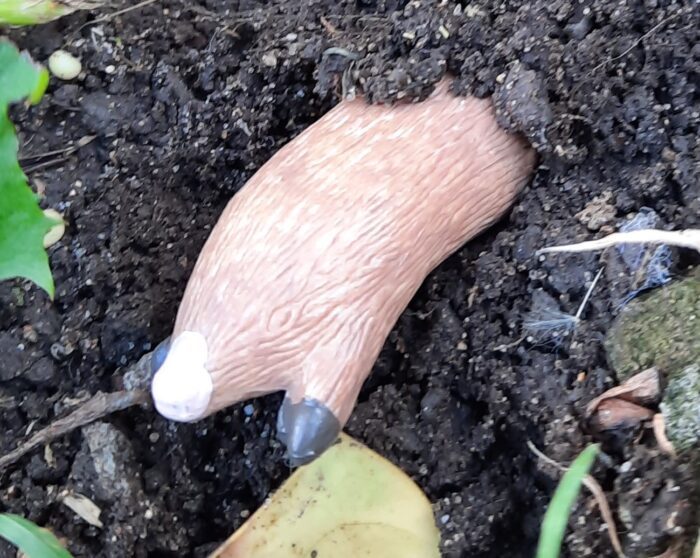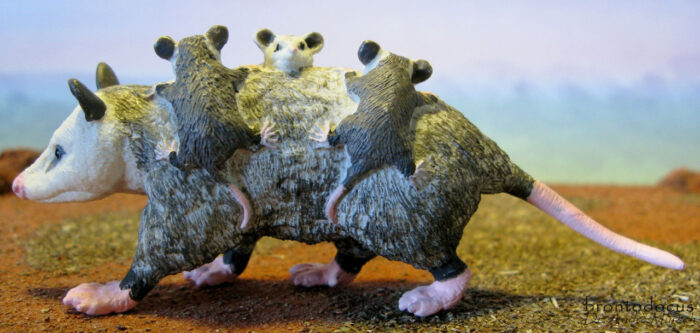If there is one evolutionary process I love, it’s convergent evolution, where two completely different species evolve the same adaptations to deal with similar environments. Whether it’s the tenrecs of Madagascar looking like hedgehogs, or the similarities between fish, dolphins and ichthyosaurs, it’s impressive how evolution can take these similarities and apply it to different groups.
Classification: Marsupials
Koala, 2021 (Wildlife by CollectA)
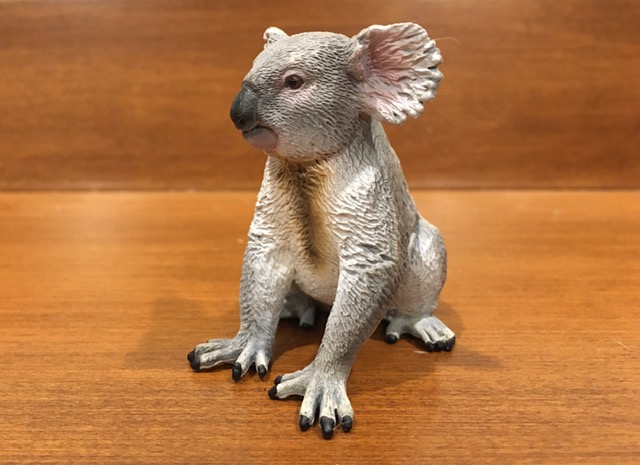
Review and images by Suspsy; edited by bmathison1972
After the kangaroo, the most famous and beloved Australian animal has to be the koala (Phascolarctos cinereus) with its thick fur, round face, prominent nose, and even more prominent ears. Not surprisingly then, the humble marsupial has enjoyed a huge abundance of toys, mostly plush ones, but a good many plastic ones as well.
Thylacine (Wildlife by CollectA)
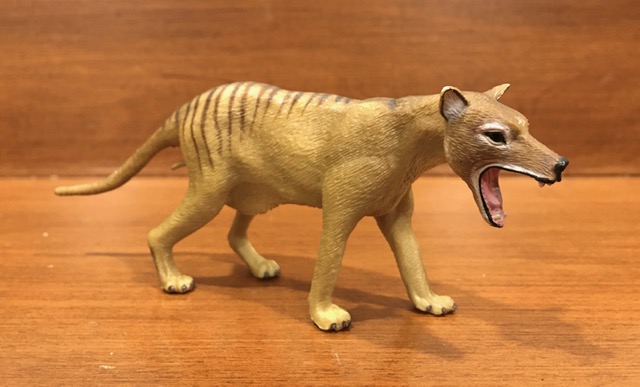
Review and images by Suspsy; edited by bmathison1972
For millions of years, the modern thylacine (Thylacinus cynocephalus), also known as the marsupial wolf and the Tasmanian tiger, was one of Australia’s apex predators. But thanks to over-hunting, habitat destruction, and sheer callousness on the part of human beings, this magnificent animal has gone the way of the dinosaurs and other prehistoric beasts.
Opossum, with babies (Wild Safari North American Wildlife by Safari Ltd.)
Eternal Lost Breeds, Extinct animal (Takara Tomy A.R.T.S.)
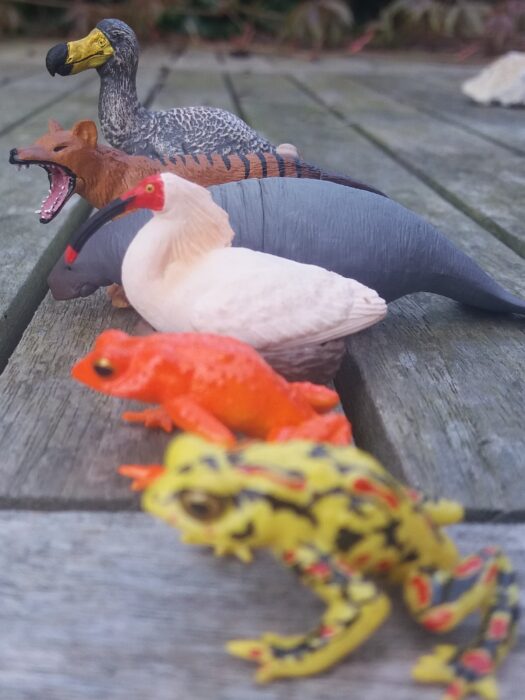
Despite the progress we have made as a species, there is one fact we cannot change: extinction is forever. As a result of our hubris, many spectacular species have been wiped from the face of the earth. Takara have created quite an exquisite set, showing a selection of the species that have been lost of the centuries, each with a stand stating scientific names and year of extinction.
Red Kangaroo, female with joey (Wild Life by Schleich)
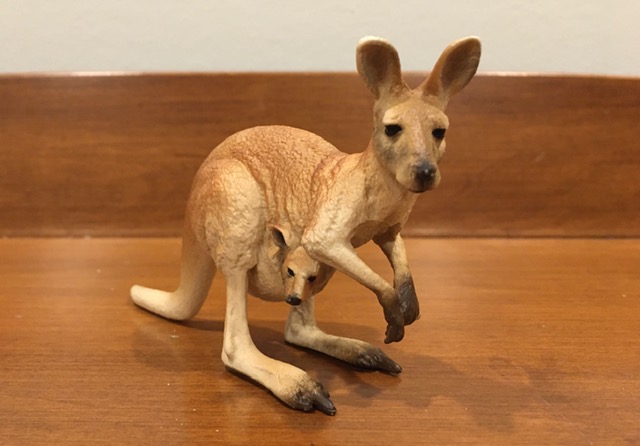
Review and photos by Suspsy; edited by bmathison1972
Kangaroo reproduction is truly astounding. A mother gives birth after only 33 days of gestation, upon which the jellybean-sized, underdeveloped neonate crawls blindly from the vagina to the pouch. Once inside, it latches on to a teat and continues to grow until it is finally ready to leave the pouch for good after about 235 days.
Tasmanian Devil (Wildlife by CollectA)

Review and photographs by Suspsy; edited by bmathison1972
Contrary to what was shown in Looney Toons, a Tasmanian devil (Sarcophilus harrisii) doesn’t have brown fur, doesn’t have a short muzzle or tufts of fur resembling horns, doesn’t walk upright, and doesn’t travel around by spinning rapidly like a tornado.
Wombat (Wildlife by CollectA)

Review and photographs by Suspsy; edited by bmathison1972
Along with kangaroos, koalas, and dingos, wombats are some of the most familiar and famous Australian animals. While they may look cute and round and harmless, they are not helpless when it comes to defending themselves. When confronted by a predator, a wombat will dash into its burrow and use its tough, round rear end to block the tunnel.
Land Down Under TOOB (Safari Ltd.)
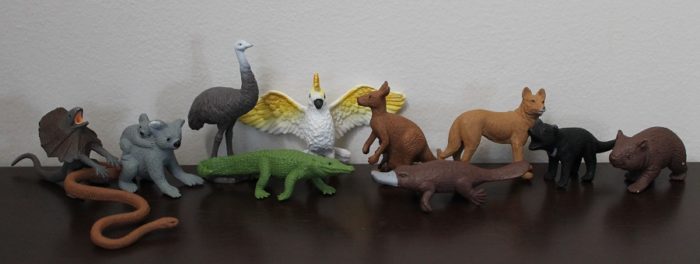
Australia, like all islands, is an isolated laboratory of sorts, one that offers a look at what the world might be like under different evolutionary pressures. The rest of the world at large operates in much the same way, no matter where you go; the placental mammals (cats, dogs, deer, antelope, etc.) dominate top tier niches.
Yellow-footed Rock-wallaby (Animals of Australia, Small Series by Science & Nature)
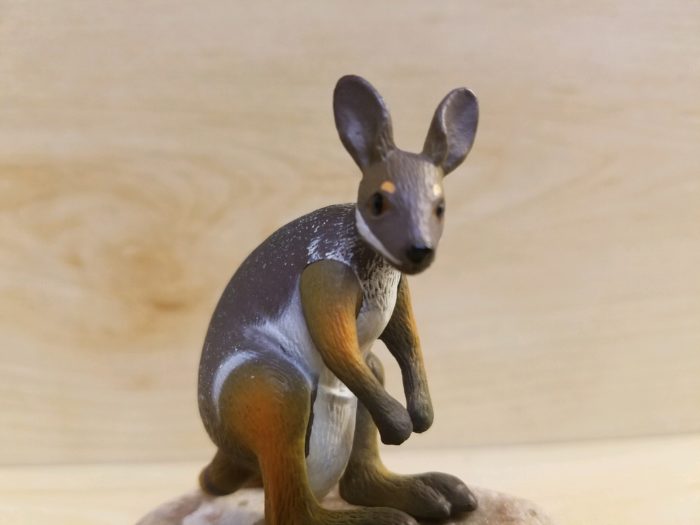
Today we are visiting the yellow-footed rock-wallaby, Petrogale xanthopus, by Science & Nature. The figure was released for the ‘small series’ in their Animals of Australia line this year (2019). Science & Nature is an Australian company that focuses on the fauna of Australia, New Zealand, and surrounding areas.
Red Kangaroo, male (Southlands Replicas)
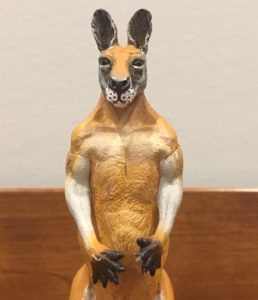
Review and photographs by Suspsy; edited by bmathison1972
The iconic red kangaroo (Osphanter rufus) bears the crowns of largest kangaroo, largest marsupial, and Australia’s largest native mammal. Exceptionally large males, also called bucks, boomers, or jacks, can weigh up to 200 lbs, stand about 6 feet tall, and cover a maximum distance of around 29 feet in a single leap.
Thylacine (Wildlife by Mojö Fun)
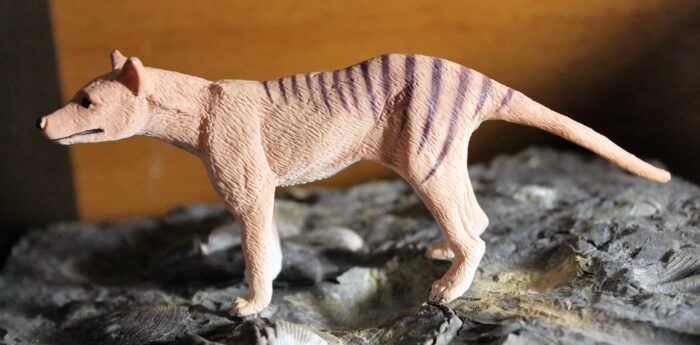
For those unfamiliar with Thylacinus cynocephalus, it was a large marsupial predator that died out on mainland Australia 2,000 years ago but continued to survive in Tasmania until the 1930’s.

